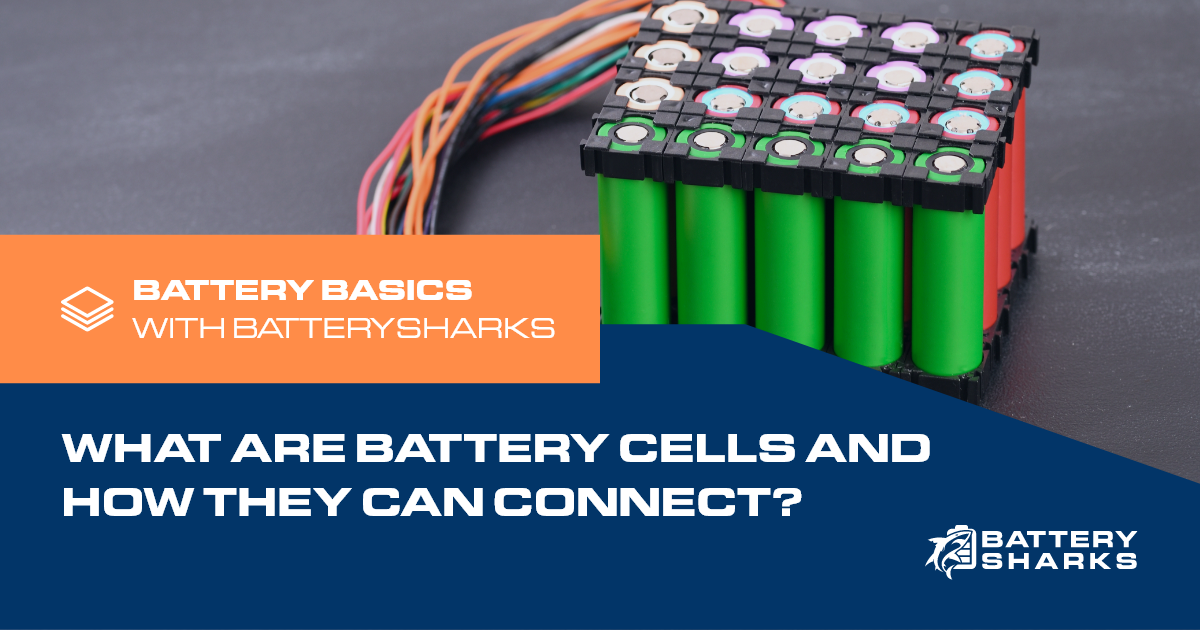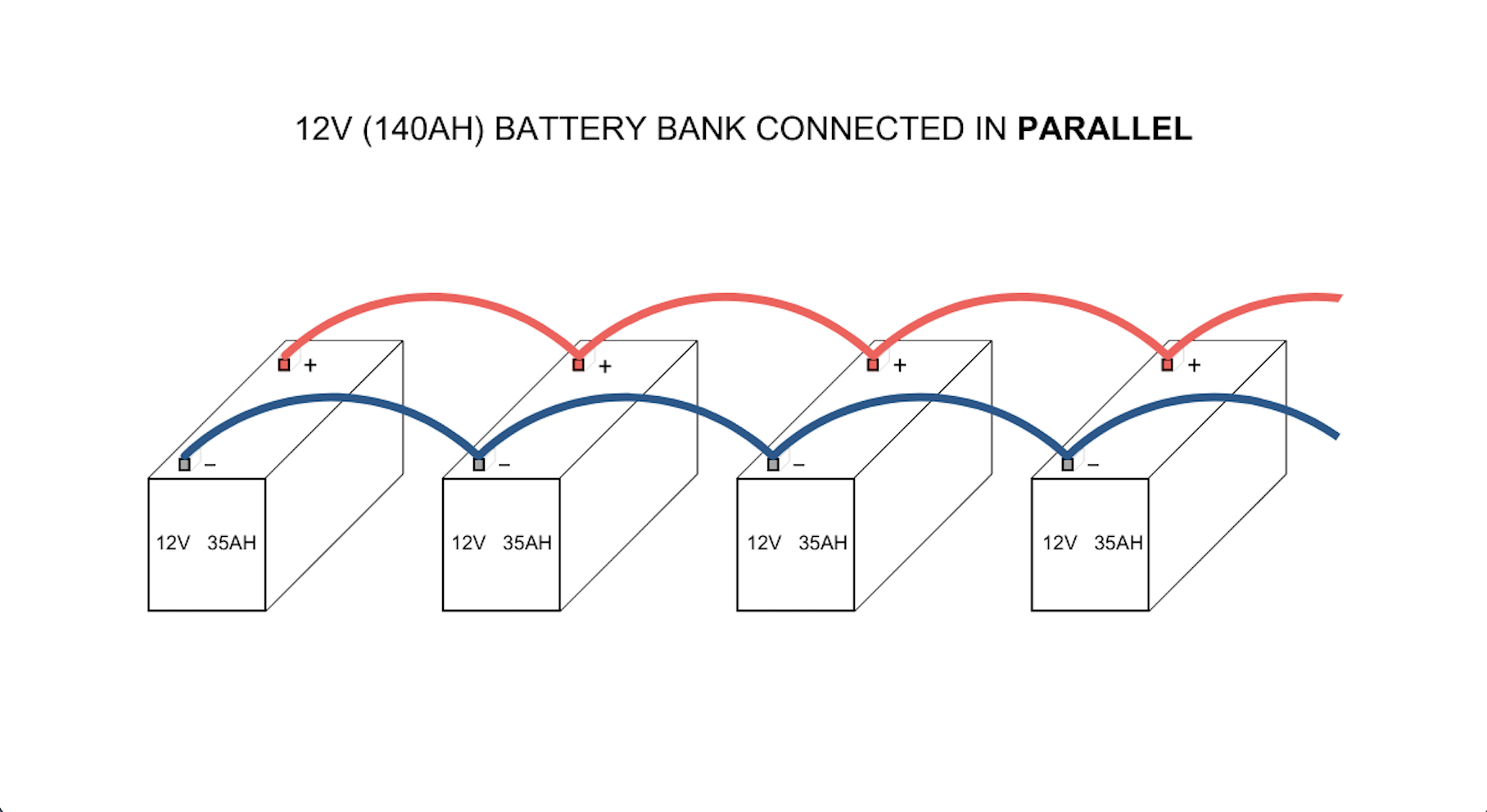
What Are Battery Cells and Ways We Can Connect Them?
We’ve found ourselves surrounded by electronic devices and electric vehicles of all types. But do we really know how they are powered?
Whether you're a tech enthusiast, an engineer, or just curious about how batteries work, knowing about series and parallel connections can be enlightening. So let's go.
What are battery cells?
Battery cells are the fundamental building blocks of batteries - they are electrochemical devices that store and provide electrical energy. A battery cell consist of three main components:
- Anode: negative electrode - this is where oxidation, or loss of electrons, occurs when discharging.
- Cathode: positive electrode - this is where reduction, or gain of electrons, occurs when discharging.
- Electrolyte: this is the conductor that allows the flow of ions between the anode and cathode, which flow completes the electrical circuit.
How do battery cells function?
Battery cells operate based on reversible chemical reactions. During discharge, electrons flow from the anode through the external circuit, providing electrical energy for devices, while ions move through the electrolyte to the cathode. During charging, the process is reversed, with electrons being supplied to the anode and ions returning to the cathode.
What chemistries do batteries come in?
Battery cells come in various chemistries, each with its own set of characteristics, including voltage, energy density, cycle life, and environmental impact. Common battery chemistries include lithium-ion, lead-acid, nickel-metal hydride, and alkaline.
What are the ways to connect battery cells?
These cells can be connected in series or parallel configurations to increase voltage, capacity, or both, depending on the specific application's requirements. Series connections increase voltage, while parallel connections increase capacity. Combination configurations provide a balance of both.
Connecting batteries in series
Series connection is needed for devices that require higher voltage than a single battery can provide. By connecting the batteries in series you are increasing the voltage while keeping the overall capacity the same as that of an individual battery. To accomplish that, you would connect the positive terminal of the first battery to the negative terminal of the next one for as many as needed.

What happens when connecting batteries in series?
- Voltage increases: When connecting batteries in series their voltage will add up. For example, if you connect two 12-volt batteries in series, you will have а total voltage of 24V (12V+12V), if you connect four batteries (as pictured) - you’d have 48V (12V+12V+12V+12V).
- Capacity remains the same: When the batteries are connected in series, the overall capacity (measured in ampere-hours - Ah, or milliamp-hours - mAh) remains the same as is of an individual battery. If you connect two 35Ah batteries, the total capacity will remain 35Ah.
- Current flows through all connected batteries.
- Polarity is important: It’s crucial to ensure you have the correct polarity when connecting the batteries, as incorrect wiring can damage both the batteries and the device/s they are connected to.
It is important to mention that, when connected in series, if one battery in the arrangement fails, it can affect the performance of the rest.
Connection in series is mostly used when higher voltage is required for devices such as remote-controls, flashlights, electric toys, and other electronic devices.
Connecting batteries in parallel
Parallel connection is required when higher capacity is needed while maintaining the voltage as it is of a single battery. For parallel setting, connect the positive terminal of the first battery to the positive terminal of the next one for as many as needed.

What happens when connecting batteries in parallel?
- Voltage remains the same: When connecting batteries in parallel, the voltage across the setting remains the same as of a single battery. If you connect two 12V batteries in parallel, you’d still have 12V in the end.
- Capacity increases: the overall capacity would increase when connecting in parallel. If you connect two 5Ah batteries, you’d end up with a 140Ah setting (35Ah+35Ah+35Ah+35Ah).
- Current is Shared: Each battery has its own contribution to the current of the load.
- Polarity is important: It’s crucial to ensure you have the correct polarity when connecting the batteries, as incorrect wiring can damage both the batteries and the device/s they are connected to.
Parallel connection is needed to increase the capacity of battery banks, especially when the application requires higher energy storage, such as electric vehicles, solar power systems, and backup power supplies.
When connecting batteries in series, it is important to use batteries with same, or at least similar characteristics to ensure balanced performance and prevent overcharging and/or uneven discharge.


